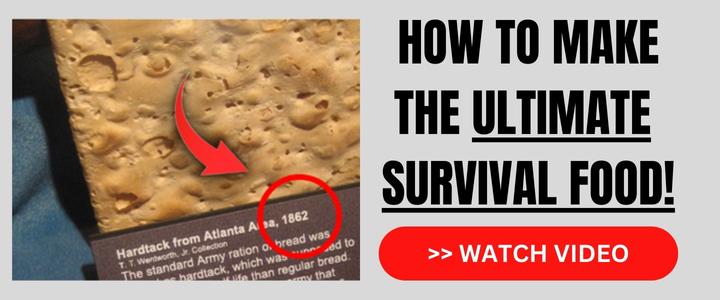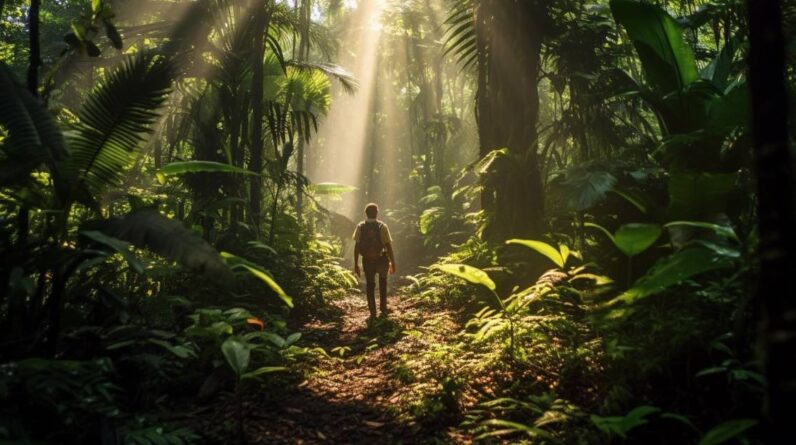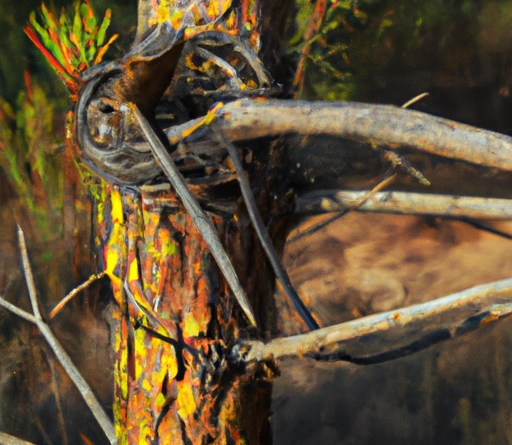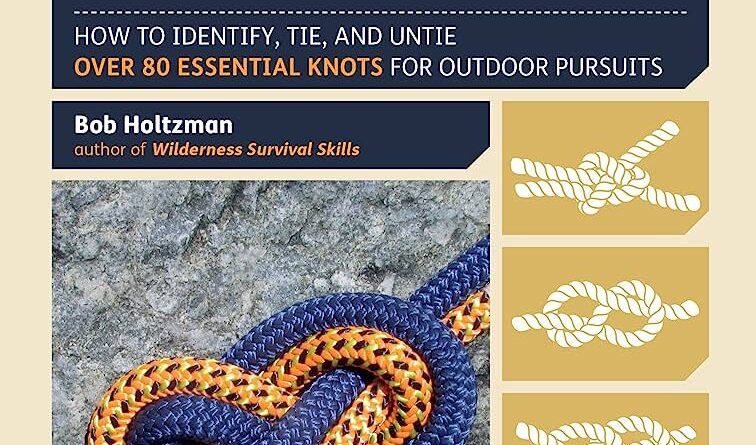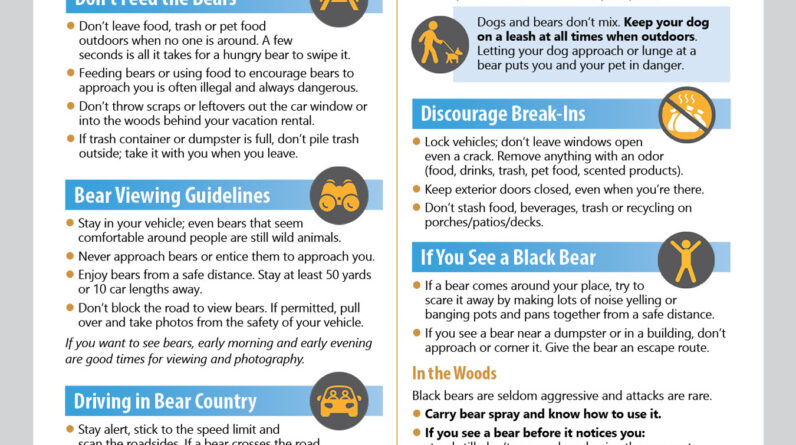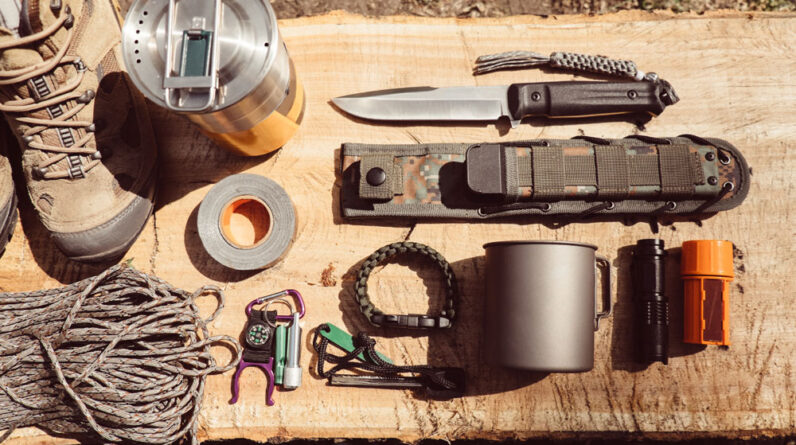
Introduction
Welcome to “Exploring the Wild: Discovering Edible Mushrooms,” where you will embark on an exciting journey into the world of wild mushroom foraging. In this post, we will delve into the allure of wild mushrooms, highlight the reasons why foraging for edible mushrooms is a fascinating activity, and provide essential safety precautions to ensure a memorable and worry-free experience.
The allure of wild mushrooms
There is something truly captivating about the mysterious and diverse world of wild mushrooms. With their vibrant colors, unique shapes, and earthy aromas, these fungi possess an enchanting beauty that draws nature enthusiasts and culinary explorers alike. Whether you are a seasoned forager or a newcomer to the world of mushroom hunting, the allure of discovering these hidden treasures in the wild is undeniable.
Why forage for edible mushrooms?
Foraging for edible mushrooms offers a multitude of rewards. Firstly, it provides a thrilling and immersive experience in nature, allowing you to connect with the environment in a unique way. Secondly, it opens up a world of culinary possibilities, as wild mushrooms introduce diverse flavors and textures to your dishes. Additionally, foraging promotes sustainability, as it reduces the reliance on commercially cultivated mushrooms and encourages a deeper appreciation for local ecosystems.
Safety precautions for mushroom foraging
While foraging for edible mushrooms can be an exciting adventure, it is crucial to prioritize safety. Before embarking on your mushroom hunt, familiarize yourself with different species and consult expert resources to accurately identify edible varieties. Remember, some mushrooms can be toxic, and misidentification can have serious consequences. It is recommended to join a foraging group or seek guidance from experienced foragers to enhance your knowledge and skills. Additionally, always exercise caution by wearing appropriate clothing, using designated tools, and carrying a field guide for reference.
Embark on the captivating journey of discovering edible mushrooms in the wild, but do so responsibly and with utmost caution. Happy foraging!

Understanding Edible Mushrooms
Mushroom foraging can be an exciting and rewarding experience, but it is crucial to have a good understanding of edible mushrooms and how to differentiate them from toxic varieties. You need to be able to confidently identify which mushrooms are safe for consumption.
Differentiating Edible Mushrooms from Toxic Varieties
When it comes to wild mushrooms, there are two important rules to follow: never consume a mushroom unless you are absolutely certain of its identification, and always double-check with an expert before consuming any unfamiliar species. One effective way to differentiate edible mushrooms from toxic ones is by examining their physical characteristics. This involves looking at the cap, stem, gills, and spore color. Additionally, it is essential to pay attention to any distinct odors, as some toxic mushrooms emit unpleasant smells.
Types of Edible Mushrooms
There are numerous types of edible mushrooms found in the wild, each with its unique characteristics and flavors. Common edible mushrooms include the versatile and flavorful chanterelle, the meaty and robust porcini, and the deliciously nutty hen-of-the-woods. Each of these mushrooms possesses distinct features that make them easily recognizable once you become familiar with their appearance and habitats.
Popular Edible Mushroom Species
Among the popular edible mushroom species are the morel, known for its distinctive honeycomb-like appearance and earthy taste. Another sought-after edible mushroom is the lobster mushroom, which bares a striking resemblance to cooked lobster, both in color and taste. Additionally, the oyster mushroom, with its delicate flavor and velvety texture, is highly regarded in culinary circles.
Remember, mushroom foraging can be a thrilling adventure, but it requires knowledge and caution. Understanding edible mushrooms, differentiating them from toxic varieties, and recognizing popular species are essential steps to ensure a safe and enjoyable culinary experience in the wild. So, grab your mushroom guidebook, head outdoors, and indulge in the wonders of nature’s flavorful treasures. Happy foraging!
Identifying Edible Mushrooms
Basic characteristics of edible mushrooms
When venturing into the wilderness, one of the most exciting discoveries you can make is stumbling upon a patch of edible mushrooms. But how can you distinguish these delectable fungi from their potentially toxic counterparts? By understanding their basic characteristics, you can ensure a safe and delicious foraging experience.
Edible mushrooms typically have certain key features that set them apart. They often have caps that are smooth, convex, or funnel-shaped, with shades of brown, white, or tan. These mushrooms also possess gills located on the underside of the cap, which release spores. Additionally, edible mushrooms generally have a solid stem that is firm, moist, and free from any blemishes or discoloration.
Key features for identifying edible mushrooms
To further aid in the identification process, key features must be considered. These include the presence of a veil or ring on the stem, the odor of the mushroom (which can range from fruity to earthy), and the spore color (which can vary from white to black). Additionally, examine the habitat in which the mushroom grows, paying attention to whether it is found on decayed wood, among leaf litter, or in grassy areas.
Using field guides and online resources
For the novice mushroom hunter, field guides and online resources can be invaluable tools. These references provide detailed descriptions, photographs, and even recipes for a wide range of edible mushrooms. By comparing your findings to the illustrations and descriptions in these resources, you can gain confidence in your identification skills and ensure a successful foraging experience.
With a keen eye for basic characteristics, an understanding of key features, and the assistance of trusted resources, you can confidently explore the wild and discover a world of edible mushrooms. So get out there, immerse yourself in nature, and let the hunt for these culinary treasures begin!
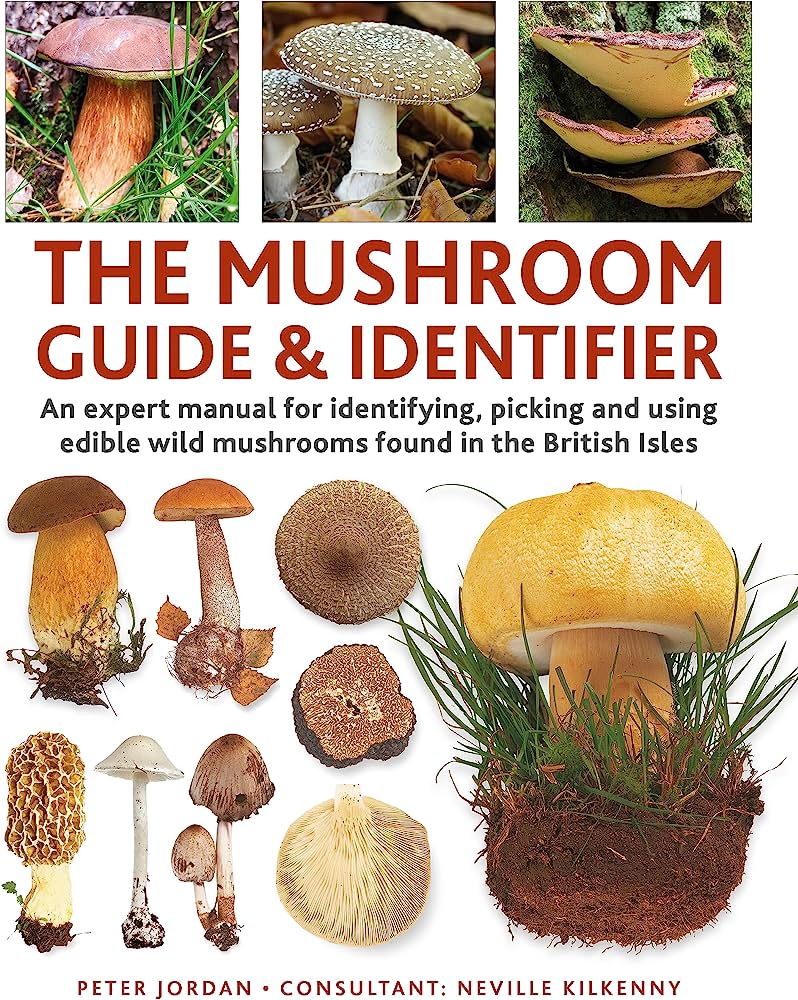
Habitats for Mushroom Foraging
Are you an adventurous soul who loves exploring the untamed wilderness? If so, then mushroom foraging might just be the perfect activity for you! There’s something truly exhilarating about venturing into the wild, seeking out the hidden treasures that nature has to offer. And when it comes to edible mushrooms, the possibilities are endless.
Prime locations for finding edible mushrooms
When it comes to mushroom hunting, forests, meadows, and other natural habitats are your best bet. These lush environments provide the ideal conditions for mushroom growth, offering a diverse range of species to discover. Forests, with their damp soil and decaying organic matter, host an array of delicious fungi, from the elusive morels to the flavorful chanterelles. As for meadows, their open spaces and abundance of sun allow for the proliferation of edible mushrooms such as the delectable porcini.
Factors influencing mushroom habitats
Several factors play a role in determining the presence of mushrooms in specific habitats. Moisture, for instance, is essential for mushroom growth, making rainy or humid climates especially favorable. Additionally, the type of trees in a forest can greatly impact its mushroom population. For example, certain species, like the prized truffle, thrive in association with specific tree varieties.
So, grab your basket and embark on a thrilling journey through the wild. From enchanting forests to picturesque meadows, there’s a whole world of edible mushrooms waiting to be discovered. Happy foraging, and may your culinary adventures be filled with delightful flavors!
Foraging Techniques
Tools and equipment for mushroom foraging
When it comes to exploring the wild and discovering edible mushrooms, having the right tools and equipment is essential. Here are a few items that can greatly enhance your foraging experience:
-
Basket or bag: A sturdy basket or bag is ideal for collecting mushrooms without damaging them. Avoid using plastic bags, as they can cause the mushrooms to sweat, leading to spoilage.
-
Knife: Carry a sharp knife for cleanly cutting mushrooms from the base of the stem. This ensures that the mycelium, the part of the mushroom responsible for regrowth, remains intact.
-
Field guide: Investing in a reliable field guide will help you identify different mushroom species and distinguish between edible and toxic varieties. Look for one with detailed descriptions, clear photographs, and information about habitat and seasonality.
Best practices for sustainable harvesting
When foraging for mushrooms, it is crucial to follow sustainable harvesting practices to protect the delicate ecosystems they inhabit. Here are some guidelines to keep in mind:
-
Leave no trace: Only harvest mushrooms you can positively identify as edible. Avoid taking rare or protected species, as they play a crucial role in maintaining biodiversity.
-
Selective picking: Instead of clearing out entire patches, choose mature mushrooms while leaving smaller ones to continue growing. This ensures the sustainability of the mushroom population in the area.
-
Spread spores: After harvesting, scatter mushroom spores in the foraging area to enhance regrowth. You can do this by breaking off a few mature mushroom caps and placing them gill-side down on the forest floor.
Tips for successful mushroom spotting
Spotting edible mushrooms amidst the wild can be quite challenging, but with a few tips and tricks, you’ll improve your chances of success:
-
Know your habitat: Different mushroom species thrive in specific environments, such as forests, grasslands, or even decaying logs. Understanding the preferred habitat of different mushrooms will help you narrow down your search.
-
Observe tree associations: Many mushroom species have symbiotic relationships with specific trees. For example, Chanterelles often grow near oak or pine trees, while morels favor burn sites. Pay attention to these associations to increase your chances of finding edible varieties.
-
Timing is key: Mushrooms are seasonal, and their fruiting bodies appear during specific times of the year. Research the optimal season for your target mushrooms and plan your foraging expedition accordingly.
Remember, foraging for edible mushrooms requires caution and knowledge. Prioritize safety, consult experts, and never consume any mushroom without proper identification. Happy foraging!
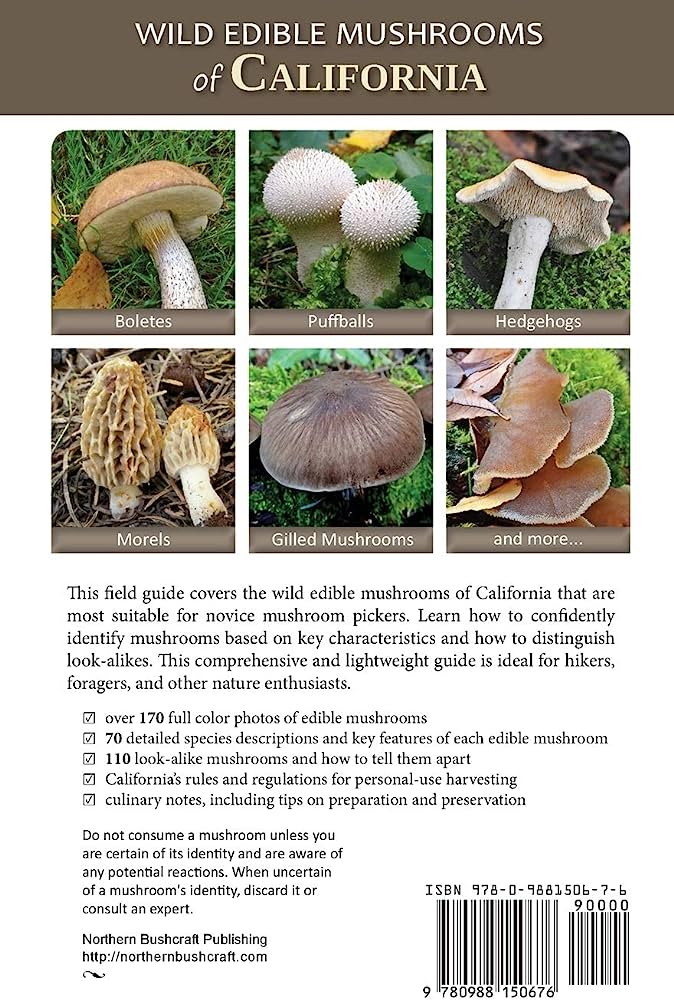
Cooking with Edible Mushrooms
Wild mushrooms are not only a fascinating part of nature, but they can also be a delightful addition to your culinary adventures. Once you have mastered the art of identifying edible mushrooms during your wilderness foraging trips, it’s time to bring them into your kitchen and explore the countless possibilities they offer. In this section, we will take a closer look at how to prepare wild mushrooms for consumption, discover delicious recipes showcasing these delectable fungi, and explore preservation methods for long-term use.
Preparing wild mushrooms for consumption
Before incorporating wild mushrooms into your cooking, it is essential to properly clean and prepare them. Begin by gently brushing off any dirt or debris with a soft brush or a clean cloth. Avoid rinsing them with water, as mushrooms tend to absorb moisture quickly, affecting their taste and texture. Instead, you can wipe them gently with a damp cloth if necessary. It’s also crucial to remove any unwanted parts, such as the stem base or tough parts of the cap, before cooking.
Delicious recipes showcasing edible mushrooms
Once your mushrooms are cleaned and prepared, it’s time to let your creativity take over in the kitchen. Edible mushrooms can enhance the flavors of a variety of dishes, from soups and stews to pasta, risottos, and even pizzas. One appetizing recipe is a creamy mushroom risotto, where you can use a mix of wild mushrooms to add a unique earthy flavor. Another delectable option is a simple sautéed mushroom dish with garlic and herbs, which pairs wonderfully with grilled meats or can be enjoyed on its own.
Preservation methods for long-term use
If you find yourself with an abundant supply of wild mushrooms, it’s a great idea to explore preservation methods. By preserving these delicacies, you can extend their shelf life and enjoy them throughout the year. One popular method is drying them, which involves removing their moisture content to prevent spoilage. Another option is to pickle the mushrooms, adding tangy flavors that pair well with salads and charcuterie boards. Freezing mushrooms can also be an effective way to preserve them, ensuring they maintain their taste and texture.
With these tips and techniques, you are well on your way to elevating your culinary experiences by incorporating the treasures you discover during your adventures in the wild. So go out, explore, and experiment with the diverse world of edible mushrooms. Let your taste buds embark on a journey they won’t soon forget!

Potential Health Benefits
When you venture into the wild and discover edible mushrooms, you not only unlock a whole new world of flavors, but also potential health benefits. Mushrooms are not only a delicious addition to your meals, but they are also packed with valuable nutrients that can contribute to your overall well-being.
Nutritional value of edible mushrooms
Edible mushrooms are known to be a great source of essential nutrients. They are low in calories, making them a perfect option for those conscious about their weight. Mushrooms contain significant amounts of vitamins such as vitamin D and B vitamins, which play vital roles in maintaining healthy bones, boosting the immune system, and improving brain function.
Medicinal properties and traditional uses
For centuries, mushrooms have been used in traditional medicine for their various health benefits. Some species have shown anti-inflammatory and antioxidant properties, which can potentially help reduce the risk of chronic diseases. Additionally, certain mushrooms have been used in traditional practices to support immune health, digestive health, and even aid in cancer prevention.
Recent scientific studies and findings
Recent scientific studies have shed light on the potential health benefits of edible mushrooms. Researchers have found that certain medicinal mushrooms may have immune-boosting effects, help lower cholesterol levels, and possess anti-cancer properties. These studies continue to push the boundaries of our understanding of mushrooms’ therapeutic potential.
So, the next time you set out to explore the wild and discover edible mushrooms, not only will you be treated to a flavorsome feast, but you may also reap the potential health benefits they offer. Remember to familiarize yourself with proper foraging techniques and consult experts to ensure you identify and consume safe and edible varieties. Happy mushroom hunting!

Conclusion
The joy of wild mushroom exploration
You’ve now reached the end of our guide on exploring the wild and discovering edible mushrooms. We hope that this journey has filled you with a sense of wonder and excitement for the world of fungi that surrounds us. The thrill of embarking on an adventure, armed only with your newfound knowledge and a sense of curiosity, is truly unparalleled.
Embracing sustainable foraging practices
It’s important to remember that foraging should always be approached with care and respect for nature. By adhering to sustainable practices, you can ensure the longevity of both the mushrooms you seek and the ecosystems they inhabit. Always be mindful of your impact and only collect what you need, leaving behind enough for others and for the mushrooms to reproduce.
Continued learning and appreciation
While this guide has provided a solid foundation, your journey as a mushroom enthusiast has just begun. There is always more to learn, more species to discover, and more ways to deepen your appreciation for the incredible diversity and beauty of edible mushrooms. Keep exploring, connecting with experienced foragers, and honing your identification skills. With time, you will find yourself becoming a true connoisseur of the wild, indulging in the bountiful flavors and fascinating stories that edible mushrooms have to offer.
So, go out into the wild with confidence, armed with the knowledge to identify and enjoy the many delicious mushrooms that nature has to offer. Happy foraging!


